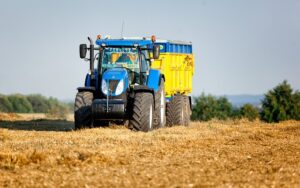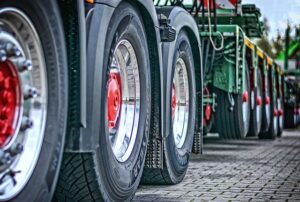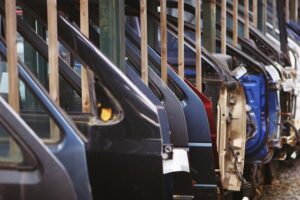More than 70 percent of the freight tonnage moved throughout the United States goes on trucks. Without these vehicles and others that rely on fifth-wheel couplings, the economy would come to a standstill. As the trucking industry grows by 3.4 percent annually through 2023, steel investment casting will remain a vital manufacturing process that keeps tractor units safely linked to semi-trailers.
What are Fifth-Wheel Couplings?

When a connected truck turns, the semi-trailer’s downward-facing surface with the kingpin at the center rotates against the fifth wheel’s upward-facing surface. The fifth wheel does not rotate.
Benefits of fifth-wheel couplings include:
- Increased safety
- Towing stability
- Avoiding overloading a vehicle with cargo
- Freedom to switch out trailers on tractors
By selecting a quality coupling, installing it correctly and keeping up on maintenance tasks, an operation may experience financial savings because of reduced downtime and fewer repairs.
History of Fifth-Wheel Couplings

In the early 1900s, Charles Martin of the Martin Rocking Fifth Wheel Company submitted a patent application for the fifth wheel plans his partner Hermann Farr designed. Farr’s invention made it possible for fleet owners to attach large trailers to tractors safely. I also made it possible to attach different trailers to one vehicle, making it simple to switch them out. A driver may drop off one trailer at a destination and travel to a new destination with a different trailer or no trailer at all.
The invention of the semi-trailer by August Fruehauf of the Fruehauf Trailer Corporation helped make the Martin Rocking 5th Wheel a success when the company used the coupling between 1916 and 1919. Fruehauf contracted with the military during the First World War, making it simpler to send convoys of supplies and personnel from Detroit to Norfolk, Virginia, shipyards. Soon, manufacturers, businesses and merchants in all industries created an unprecedented demand for the semi-trailer and shuttle concept.
In 1919, Fruehauf began using a newly invented manual coupler on vehicles. By 1926, he introduced the automatic semi-trailer in which the tractor mechanically did the coupling and uncoupling.
Modern fifth wheels allow trailers to easily slide into fifth wheel couplings and lock into place. Engaging the kingpin into the fifth-wheel’s locking mechanism is the only way to connect a tractor and trailer. Safety chains help secure the connection.
Steel Investment Casting and Fifth-Wheel Couplings

During the custom investment casting process, manufacturers create a master pattern of the fifth-wheel coupling component they wish to reproduce. They then make a mold, or master die, to produce a wax pattern. Manufacturers may assemble multiple wax patterns into a larger pattern for a batch pour. After assembling the pattern, a ceramic mold is made and the wax within it is melted and removed. Specialists then fill the cavities with molten metal. After the metal hardens, manufacturers remove the component’s outer shell to release it.
As the trucking industry continues to grow to meet shipping demands, the manufacturing of fifth-wheel couplings and replacement components are crucial to reducing downtime and meeting deadlines. Sinotech offers high-quality custom investment castings at competitive rates. Contact us today to discover the advantages and cost savings of working with a U.S.-based company with dedicated factories along the Pacific Rim.
